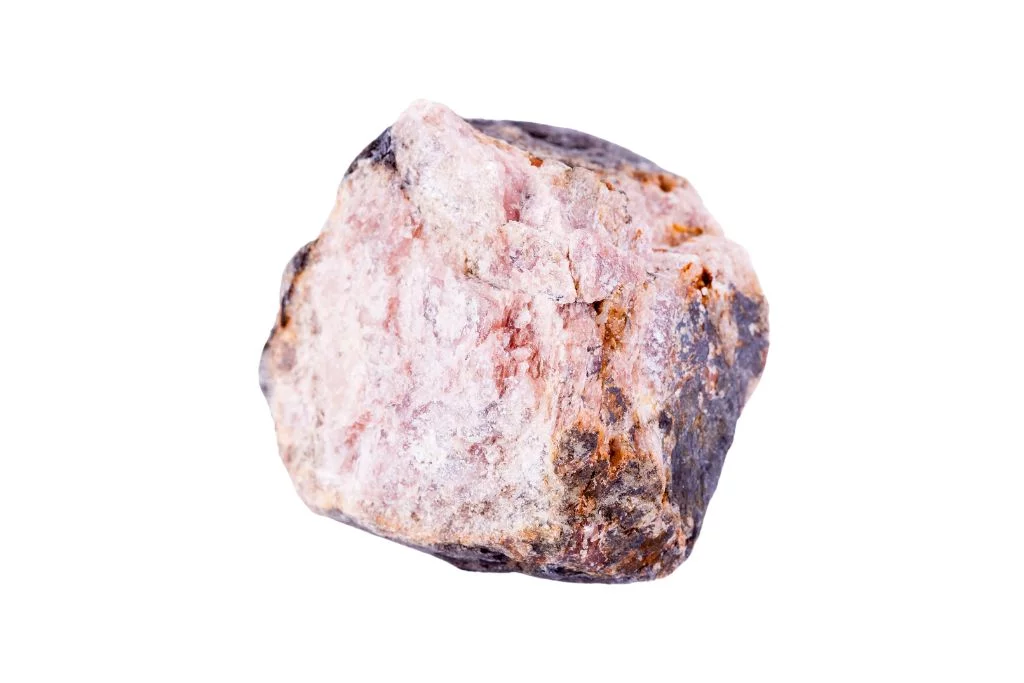Color and Appearance of Andalusite
Andalusite is a striking mineral known for its pleochroic properties, which means it displays different colors when viewed from various angles. The most common colors of andalusite include shades of brown, green, and reddish-brown. Some specimens may also exhibit hints of yellow, gray, or even pink. This color-changing effect is one of the most distinctive features of andalusite, making it highly sought after by collectors and gemstone enthusiasts.
Crystal Structure
Andalusite typically forms orthorhombic crystals, characterized by their elongated, prismatic shape. These crystals often have a square or nearly square cross-section, with well-defined faces and edges. The mineral’s structure is relatively hard, ranking 7 to 7.5 on the Mohs scale, which contributes to its durability and suitability for use in jewelry.
Notable Physical Characteristics
One of the most remarkable features of andalusite is its exhibition of strong pleochroism. This optical phenomenon causes the crystal to absorb light differently along its various crystallographic axes, resulting in visible color changes. In some specimens, this effect is so pronounced that it creates a striking visual display, with distinct color zones visible within a single crystal.
Unique Aspects of Andalusite
Perhaps the most famous variety of andalusite is chiastolite, also known as cross stone. Chiastolite contains carbonaceous impurities arranged in a cross-shaped pattern within the crystal. When cut perpendicular to the c-axis, these crystals reveal a distinct dark cross or X-shape against a lighter background. This unique internal structure has made chiastolite popular in jewelry and as a collector’s item, often associated with symbolic or metaphysical properties.
Historical and Cultural Significance of Andalusite
Andalusite, named after its type locality in Andalusia, Spain, has been revered for centuries for its unique optical properties and color-changing abilities. In ancient times, it was often mistaken for other gemstones due to its pleochroism, which causes it to display different colors when viewed from different angles. This optical phenomenon led to its use in jewelry and decorative objects, particularly during the Renaissance period in Europe.
Metaphysical Associations
In the realm of crystal healing and metaphysical practices, andalusite is believed to possess powerful energetic properties. It is often associated with balance, harmony, and spiritual growth. Many practitioners claim that andalusite can help align the physical and ethereal bodies, promoting a sense of inner peace and stability. The stone is also thought to enhance one’s ability to perceive and understand the root causes of problems, making it a valuable tool for self-reflection and personal development.
Common Uses and Benefits
Andalusite finds applications in both traditional and modern contexts. In jewelry making, it is prized for its durability and unique color-changing properties, often used in statement pieces and custom designs. Industrially, andalusite is utilized in the production of high-temperature ceramics and refractory materials due to its heat-resistant qualities. In alternative healing practices, andalusite is commonly used in crystal grids, meditation, and energy work. Practitioners believe it can help alleviate stress, boost self-confidence, and enhance problem-solving abilities. Some also claim that wearing or carrying andalusite can provide protection against negative energies and promote a sense of grounding and stability in one’s life.

